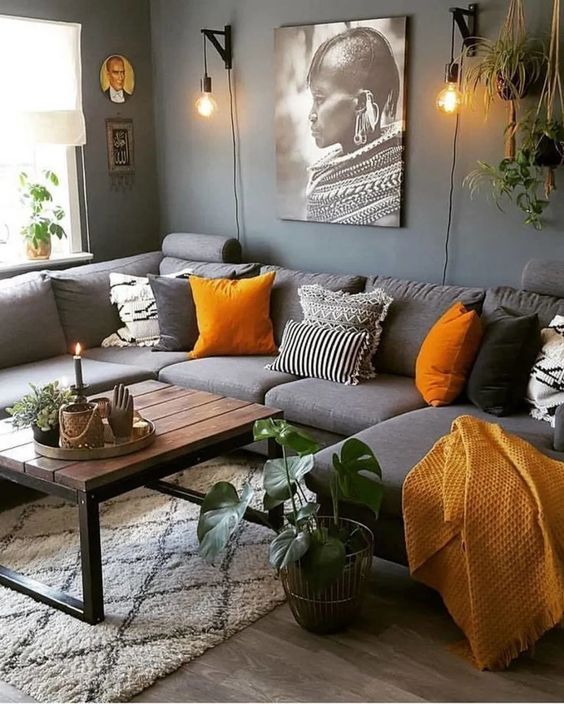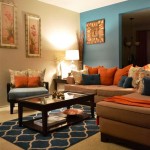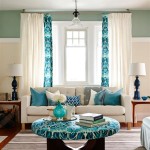Elegant Decorating Ideas With Grey Walls
Grey, often perceived as a neutral and unassuming color, has become a cornerstone of modern interior design. Its versatility allows it to function as a sophisticated backdrop for a diverse range of decorating styles, from minimalist and contemporary to traditional and rustic. Understanding how to effectively decorate with grey walls involves considering factors such as the undertones of the grey paint, the room's natural lighting, and the desired overall ambiance. The following sections will explore key decorating strategies that leverage the elegance and adaptability of grey walls.
Understanding Grey Undertones
The success of any decorating scheme with grey walls hinges on accurately identifying the undertones present in the chosen shade. Grey is not a monolithic color; it exists on a spectrum influenced by subtle hints of other colors. These undertones can significantly impact how the grey interacts with other elements in the room, such as furniture, textiles, and artwork. Common undertones include:
Cool Undertones (Blue, Green, Violet): Greys with cool undertones tend to create a calming and serene atmosphere. They work particularly well in bedrooms, bathrooms, and spaces designed for relaxation. These greys pair effectively with cooler colors like blues, greens, and purples, as well as with materials like stainless steel and chrome.
Warm Undertones (Yellow, Red, Brown): Warmer greys introduce a sense of coziness and comfort. They are well-suited for living rooms, dining rooms, and other areas where a welcoming environment is desired. These greys complement warmer colors like reds, oranges, and yellows, as well as natural materials like wood and leather.
Neutral Undertones: True neutral greys are relatively rare, but they provide the most versatile base. They lack strong undertones, making them adaptable to a wide range of color palettes and decorating styles. This type of grey can be paired with almost any color, allowing for maximum flexibility in design choices.
Testing paint samples is crucial to determining the undertone of a grey paint. Observe the samples in different lighting conditions, as the undertones can become more or less pronounced depending on the light source. Compare the grey samples to white and other neutral colors to discern the subtle hints of color within the grey.
Selecting Complementary Colors and Materials
The choice of complementary colors and materials is essential for creating a balanced and visually appealing space with grey walls. The selections should be guided by the undertones of the grey paint and the desired overall aesthetic.
For Cool Grey Walls: Consider using a palette that incorporates blues, greens, and purples in varying shades. These colors enhance the cool, calming effect of the grey. Accents of white or off-white can provide a crisp contrast and brighten the space. Materials like stainless steel, chrome, and glass complement the cool tones and contribute to a modern aesthetic. Consider incorporating textures such as velvet or linen to add warmth and prevent the space from feeling too sterile.
For Warm Grey Walls: Opt for a palette that includes reds, oranges, yellows, and browns. These colors amplify the warmth and coziness of the grey. Introduce natural materials like wood, leather, and wool to further enhance the inviting atmosphere. Metallics like brass or gold can add a touch of luxury and sophistication. Consider using patterns with warm tones to add visual interest and break up large expanses of grey.
For Neutral Grey Walls: Neutral grey walls offer the greatest flexibility in color selection. Any color palette can be successfully integrated, provided that the chosen colors are balanced and harmonious. To create a sophisticated look, consider using a monochromatic palette with varying shades of grey and white. To inject energy and personality, introduce pops of vibrant color through artwork, accessories, and textiles. The key is to maintain a sense of balance and avoid overwhelming the space with too many competing colors.
Lighting plays a significant role in how colors are perceived. Warm lighting can enhance the warmth of colors, while cool lighting can accentuate cooler tones. Consider the type of lighting used in the room when selecting complementary colors and materials.
Incorporating Texture and Pattern
Texture and pattern are vital for adding depth, interest, and personality to rooms with grey walls. Without texture and pattern, a space can feel flat and uninviting. A variety of textures and patterns can be incorporated through furniture, textiles, wall decor, and architectural details.
Textural Elements: Texture can be introduced through a variety of materials and finishes. Consider incorporating the following:
- Upholstery: Choose furniture with different textures, such as velvet, linen, leather, or wool.
- Rugs: Add a rug with a plush pile, a geometric pattern, or a natural fiber weave.
- Wall Decor: Incorporate textured wall panels, woven tapestries, or sculptural artwork.
- Window Treatments: Select curtains or blinds with a distinct texture, such as linen, silk, or velvet.
- Accessories: Add decorative pillows, throws, and baskets with varying textures.
Patterned Elements: Pattern can be incorporated in a variety of ways, including:
- Wallpaper: Use patterned wallpaper on an accent wall or throughout the entire room.
- Textiles: Choose patterned fabrics for upholstery, curtains, and rugs.
- Artwork: Hang artwork with bold patterns or intricate designs.
- Accessories: Use patterned decorative pillows, throws, and ceramics.
When combining textures and patterns, it is important to maintain a sense of balance and harmony. Avoid using too many competing textures or patterns, as this can create a cluttered and overwhelming effect. Consider varying the scale of the patterns, using a mix of large-scale and small-scale designs. Also, consider the color palette when selecting textures and patterns. Choose textures and patterns that complement the overall color scheme of the room. For example, if the room features cool grey walls and a blue accent color, consider using textures like velvet or linen in shades of blue and grey.
Adding architectural details, such as crown molding, wainscoting, or exposed brick, can also add texture and interest to a room with grey walls. These details can create a sense of character and history, adding dimension and visual appeal.
Leveraging Lighting for Ambiance
Lighting is an essential element in interior design, and its impact is amplified when working with grey walls. Grey, being a neutral color, can reflect light differently depending on its undertones and the type of lighting used. Utilizing lighting effectively can transform a space from feeling drab to feeling warm, inviting, and visually stimulating.
Natural Light: Natural light is often the most desirable form of illumination. Maximize natural light by keeping windows unobstructed and using light-colored window treatments. Mirrors can be strategically placed to reflect natural light and brighten the space. Observe how natural light interacts with the grey walls at different times of the day to understand how the color shifts and changes.
Artificial Light: Artificial lighting provides control over the ambiance of the room. Different types of artificial lighting can be used to achieve different effects:
- Ambient Lighting: This is the primary source of light in the room, providing overall illumination. Choose fixtures that distribute light evenly and avoid creating harsh shadows. Dimmers can be used to adjust the brightness of the ambient lighting and create a more relaxed atmosphere.
- Task Lighting: This type of lighting is used for specific tasks, such as reading, cooking, or working. Position task lighting strategically to provide adequate illumination for these activities. Examples include desk lamps, under-cabinet lighting, and reading lights.
- Accent Lighting: This type of lighting is used to highlight specific features of the room, such as artwork, architectural details, or decorative objects. Use spotlights, recessed lighting, or wall sconces to draw attention to these features.
The color temperature of light bulbs can also significantly impact the ambiance of the room. Warm-toned light bulbs (2700K-3000K) create a cozy and inviting atmosphere, while cool-toned light bulbs (3500K-5000K) create a brighter and more energizing atmosphere. Consider the desired mood and the undertones of the grey walls when selecting light bulb colors.
For cool grey walls, consider using cooler-toned light bulbs to enhance the calming effect. For warm grey walls, consider using warmer-toned light bulbs to amplify the coziness. Experiment with different lighting schemes and adjust the brightness levels to achieve the desired level of illumination and ambiance. Consider using a combination of different types of lighting to create a layered and dynamic lighting scheme.
Adding Personality with Accessories and Art
Accessories and art are fundamental in imbuing a space with character and personal flair, particularly when dealing with the neutral backdrop of grey walls. These elements provide opportunities to inject color, texture, and visual interest, transforming a room from a basic setting into a personalized haven. The selection and arrangement of accessories and art should reflect individual preferences and complement the overall design scheme.
Artwork: Art serves as a focal point and a conversation starter. The art selection should be based on personal taste, but it should also consider the scale of the room and the color palette. Large-scale artwork can make a bold statement, while smaller pieces can be grouped together to create a gallery wall. Consider the framing of the artwork, as it can significantly impact the overall aesthetic. Choose frames that complement the artwork and the surrounding décor.
Decorative Pillows and Throws: These are an easy and affordable way to add color, texture, and pattern to a room. Choose pillows and throws in a variety of sizes, shapes, and materials. Mix and match different patterns and textures to create a visually interesting arrangement. Consider using pillows and throws to introduce seasonal colors and themes.
Rugs: A rug can anchor a space and add warmth and texture. Choose a rug that is appropriately sized for the room and that complements the furniture and the wall color. Consider using a rug with a bold pattern to add visual interest. Different rug textures, such as shag, jute, or wool, can significantly alter the feel of the room.
Plants: Plants add life and freshness to a space. They can also help to purify the air and create a more relaxing atmosphere. Choose plants that are appropriate for the lighting conditions in the room. Consider using a variety of plants in different sizes and shapes.
Mirrors: Mirrors can reflect light and make a room feel larger and brighter. Place mirrors strategically to maximize their impact. Consider using a large mirror as a focal point or grouping smaller mirrors together to create a gallery wall.
Decorative Objects: These can include vases, sculptures, candles, and other small items. Choose objects that reflect personal interests and that complement the overall design scheme. Arrange objects in groupings to create visually appealing displays.
The key to successfully incorporating accessories and art is to maintain a sense of balance and avoid clutter. Edit the collection regularly and remove any items that no longer serve a purpose or fit the overall design scheme. The goal is to create a space that feels both stylish and comfortable, reflecting personal taste and creating a welcoming atmosphere.

Grey Bedroom Decor Ideas For Your Home Designcafe

Gray Wall Living Room Design Ideas

Bedroom Decorating Ideas With Grey Walls Checkatrade

Painting And Decorating Is Grey Dead Expert Advice

35 Stylish Gray Rooms Decorating With

Gray Bedroom Ideas That Are Anything But Dull Architectural Digest

15 Contrasting Living Rooms With Dark Grey Walls Coco Lapine Designcoco Design

Gray Bedroom Inspiration

Grey Couch Living Room Ideas Decoholic

35 Stylish Gray Rooms Decorating With
Related Posts







